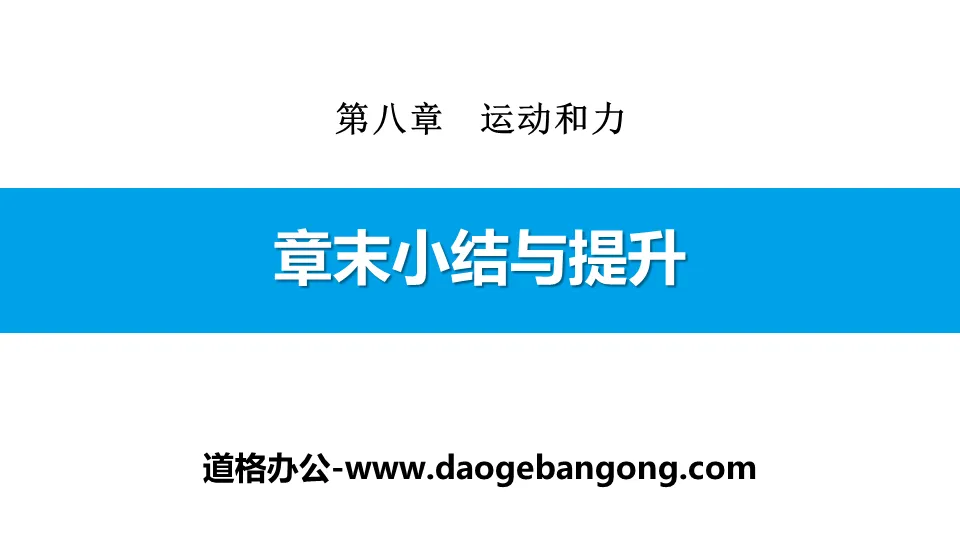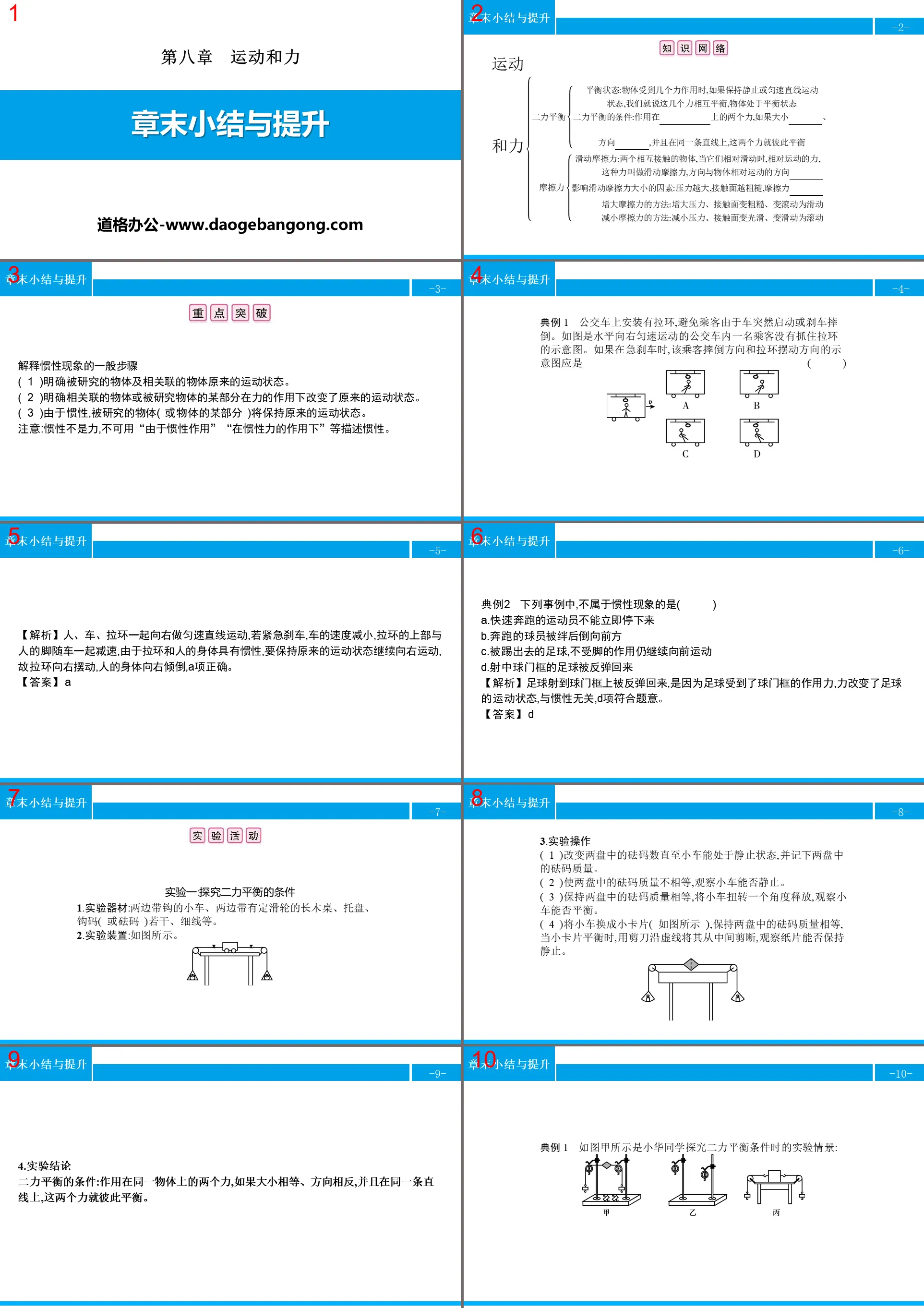People's Education Edition Physics for Grade 8, Volume 2
People's Education Edition Physics for Grade 8, Volume 1
People's Education Edition Ninth Grade Physics Complete Book
Shanghai Science Edition Ninth Grade Physics
Shanghai Science Edition 8th Grade Physics
Beijing Normal University eighth grade physics volume one
Lu Jiao Edition Ninth Grade Physics Volume 2
Beijing Normal University Ninth Grade Physics Volume 1
Lu Ke Edition High School Physics Compulsory Course One
Lu Jiao Edition Ninth Grade Physics Volume 1
People's Education Press High School Physics Compulsory Course II
Guangdong and Shanghai Edition Ninth Grade Physics Volume 1
Beijing Normal University Ninth Grade Physics Volume 2
Lu Jiao Edition Eighth Grade Physics Volume 2
Lu Jiao edition eighth grade physics volume 1
Guangdong and Shanghai Edition Ninth Grade Physics Volume 2

| Category | Format | Size |
|---|---|---|
| People's Education Edition Physics for Grade 8, Volume 2 | pptx | 6 MB |
Description
"End of Chapter Summary and Improvement" Sports and Strength PPT
Part One: Key Breakthroughs
General steps for explaining inertial phenomena
(1) Clarify the original motion state of the object being studied and related objects.
(2) The clearly related object or a certain part of the object under study changes its original state of motion under the action of force.
(3) Due to inertia, the object under study (or a certain part of the object) will maintain its original state of motion.
Note: Inertia is not a force and cannot be described as “due to the action of inertia” or “under the action of inertia force”.
Typical example 1: Buses are equipped with pull rings to prevent passengers from falling due to sudden start or braking of the bus. The picture is a schematic diagram of a passenger in a bus moving horizontally to the right at a constant speed and not grabbing the pull ring. If the passenger brakes suddenly, the schematic diagram of the direction in which the passenger falls and the direction in which the pull ring swings should be ( )
[Analysis] The person, the car, and the pull ring move together in a straight line at a constant speed to the right. If the emergency brake is applied, the speed of the car decreases. The upper part of the pull ring and the person's feet decelerate together with the car. Since the pull ring and the human body have inertia, To maintain the original state of motion and continue to move to the right, the pull ring swings to the right and the person's body tilts to the right. Item A is correct.
【Answer】A
Typical example 2: Among the following examples, the one that does not belong to the phenomenon of inertia is ( )
A. A fast-running athlete cannot stop immediately
B. The running player falls forward after being tripped
C. The kicked football continues to move forward regardless of the action of the feet.
D. The football that hit the goal frame bounced back
[Analysis] The reason why the football bounces back when it hits the goal frame is because the football is subject to the force of the goal frame. The force changes the motion state of the football and has nothing to do with inertia. Item D is in line with the meaning of the question.
【Answer】D
End-of-Chapter Summary and Improvement PPT, Part 2: Experimental Activities
Experiment 1: Explore the conditions for the balance of two forces
1. Experimental equipment: a trolley with hooks on both sides, a long wooden table with fixed pulleys on both sides, a tray, a number of hooks (or weights), thin wires, etc.
2. Experimental device: as shown in the figure.
3. Experimental operation
(1) Change the number of weights in the two plates until the car can be at rest, and note the mass of the weights in the two plates.
(2) Make the weights in the two plates unequal in mass and observe whether the car can stop.
(3) Keep the weights in the two plates equal in mass, twist the trolley at an angle and release it, and observe whether the trolley can be balanced.
(4) Replace the trolley with a small card (as shown in the picture) and keep the weights in the two plates equal in mass. When the small card is balanced, use scissors to cut it from the middle along the dotted line and observe whether the paper can remain stationary.
4.Experimental conclusion
Conditions for the balance of two forces: If two forces acting on the same object are equal in magnitude, opposite in direction, and on the same straight line, the two forces will balance each other.
Experiment 2: Study the factors affecting the magnitude of sliding friction
1. Experimental equipment: long horizontal wooden boards, cuboid wooden blocks with hooks, spring dynamometer, towels, and some weights.
2. Experimental steps
(1) While keeping factors such as the roughness of the contact surface unchanged, explore the relationship between the magnitude of sliding friction and the magnitude of pressure.
① First, place the hooked cuboid wooden block on its side on a long horizontal wooden board, use a spring dynamometer to pull the wooden block to move in a straight line at a constant speed in the horizontal direction, and record the indication F1 of the spring dynamometer;
② Place two 200 g weights on the rectangular wooden block, use a spring dynamometer to pull the wooden block to move in a straight line at a constant speed in the horizontal direction, and record the indication F2 of the spring dynamometer;
③Compare the sizes of F1 and F2 and draw conclusions.
(2) While keeping the pressure and other factors unchanged, explore the relationship between the sliding friction force and the roughness of the contact surface.
① Place the hooked cuboid wooden block on its side on a long horizontal wooden board, use a spring dynamometer to pull the wooden block to move in a straight line at a constant speed in the horizontal direction, and record the reading F3 of the spring dynamometer;
②Place a towel on a long horizontal wooden board, then use a spring dynamometer to pull the wooden block to move in a straight line at a constant speed in the horizontal direction, and record the reading F4 of the spring dynamometer;
③Compare the sizes of F3 and F4 and draw conclusions.
3.Experimental conclusion
The magnitude of sliding friction is related to the roughness of the contact surface. The rougher the contact surface, the greater the friction. The magnitude of sliding friction is also related to the pressure on the contact surface. The greater the pressure on the contact surface, the greater the friction. .
Keywords: Free download of PPT courseware for the second volume of eighth-grade physics published by the People's Education Press, download of chapter-end summary and improvement PPT, download of motion and force PPT, .PPT format;
For more information about the PPT courseware "Movement and Strength Chapter End Summary and Improvement", please click the "Movement and Strength ppt Chapter End Summary and Improvement" ppt tag.
"Test in this Chapter" Sports and Strength PPT:
"Chapter Middle School Examination" Sports and Strength PPT 1. (Heilongjiang Middle School Entrance Examination) Landslide is a natural disaster that is very easy to occur during heavy rainfall. During heavy rainfall, due to the infiltration of rainwater, some different geological layers (plates) of the mountain that are not stable enough ) the friction force changes between...
"Friction" motion and force PPT teaching courseware:
"Friction" PPT teaching courseware on motion and force Part 1: Classification practice of knowledge points Knowledge point 1 Friction 1. Friction can be divided into _____ friction, ______ friction and ____ friction. Among them, sliding friction refers to: two objects in contact with each other..
"Friction" Motion and Force PPT Download:
"Friction" Motion and Force PPT Download Part One: Preview Perception 1. Sliding Friction 1. Concept: When two objects in contact with each other slide relative to each other, a force is generated on the contact surface that hinders relative movement. 2. Cause: Objects in contact with each other..
File Info
Update Time: 2024-11-17
This template belongs to Physics courseware People's Education Edition Physics for Grade 8, Volume 2 industry PPT template
"End of Chapter Summary and Improvement" Sports and Strength PPT Simple campus recruitment activity planning plan summary enterprise and institution recruitment publicity lecture PPT template is a general PPT template for business post competition provided by the manuscript PPT, simple campus recruitment activity planning plan summary enterprise and institution recruitment promotion Lecture PPT template, you can edit and modify the text and pictures in the source file by downloading the source file. If you want more exquisite business PPT templates, you can come to grid resource. Doug resource PPT, massive PPT template slide material download, we only make high-quality PPT templates!
Tips: If you open the template and feel that it is not suitable for all your needs, you can search for related content "End of Chapter Summary and Improvement" Sports and Strength PPT is enough.
How to use the Windows system template
Directly decompress the file and use it with office or wps
How to use the Mac system template
Directly decompress the file and use it Office or wps can be used
Related reading
For more detailed PPT-related tutorials and font tutorials, you can view: Click to see
How to create a high-quality technological sense PPT? 4 ways to share the bottom of the box
Notice
Do not download in WeChat, Zhihu, QQ, built-in browsers, please use mobile browsers to download! If you are a mobile phone user, please download it on your computer!
1. The manuscript PPT is only for study and reference, please delete it 24 hours after downloading.
2. If the resource involves your legitimate rights and interests, delete it immediately.
3. Contact information: service@daogebangong.com
"End of Chapter Summary and Improvement" Sports and Strength PPT, due to usage restrictions, it is only for personal study and reference use. For commercial use, please go to the relevant official website for authorization.
(Personal non-commercial use refers to the use of this font to complete the display of personal works, including but not limited to the design of personal papers, resumes, etc.)
Preview










